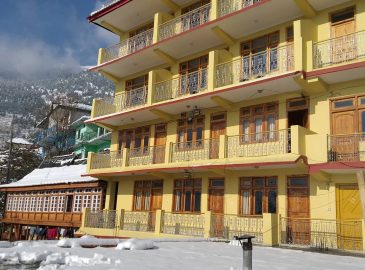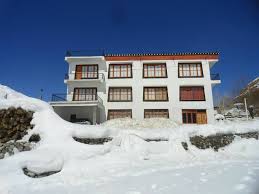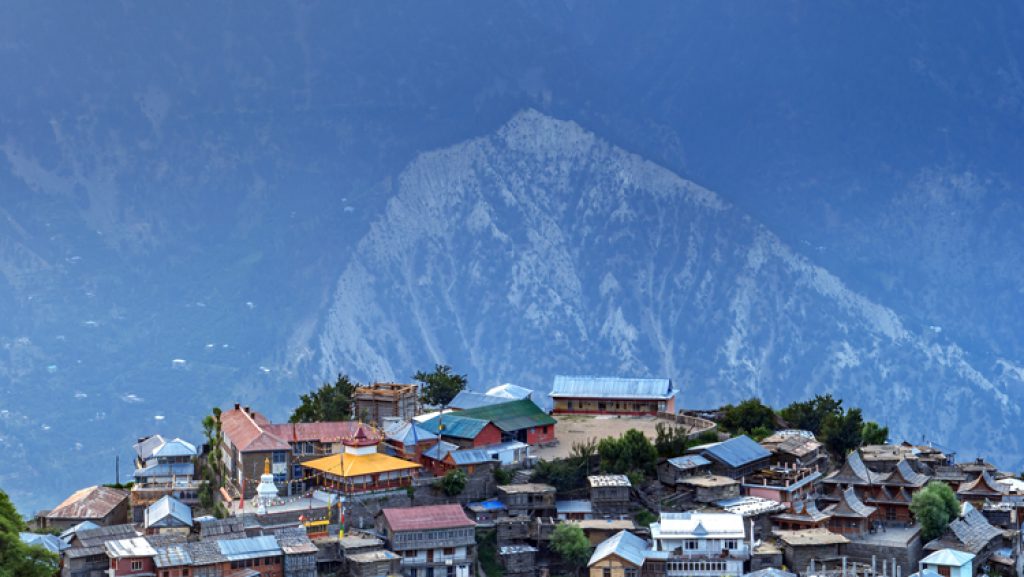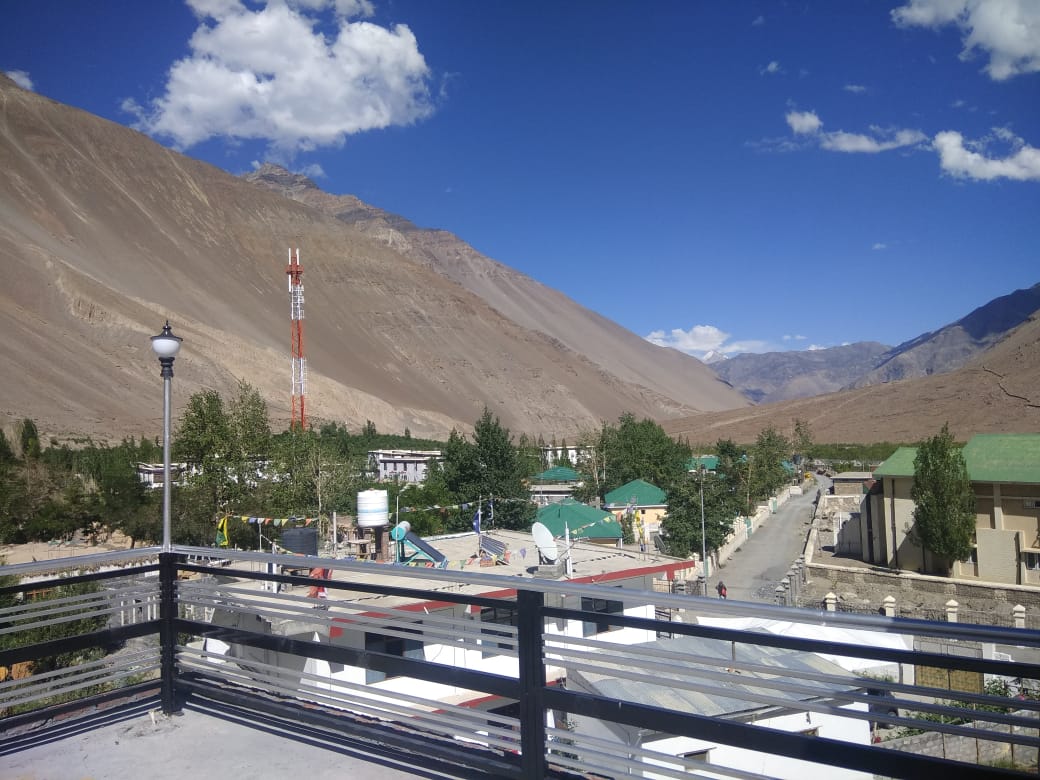About Spiti Valley
Long winding roads and valleys that present unforgettable glimpses of cold desert and snow-crowned mountains welcome you when you set foot into Spiti Valley. Bordered on all sides by the Himalayas, Spiti Valley, located in Himachal Pradesh, has an altitude of 12,500 feet above sea level, and gets just around 250 days of sunshine in the year, making it one of the coldest places in the country. With the thick Himalayan snow cutting Spiti off from the rest of the country for around 6 months a year, the summer months are the only time Spiti is directly accessible via motorway. The term Spiti means 'The Middle Land', as Spiti Valley separates India from Tibet. Scantily populated, Spiti is an adventure lover’s paradise, with a number of trekking trails that tourists can choose from. All of these treks start from Kaza (Spiti’s capital from where you make your base camp) to various peaks from where you can get panoramic views of the Himalayan mountains. An easy 1.5-kilometre trek along the Spiti River from Dhankar Monastery to Dhankar Lake promises gorgeous views of the villages below. The Dhankar Lake itself is a place where you can sit back and relax amidst the cool mountain air. The mountain ropeway from Kibber to Chichum is also another popular tourist attraction that offers spectacular views of the gorge below, as well a bird’s eye view of the surrounding peaks.
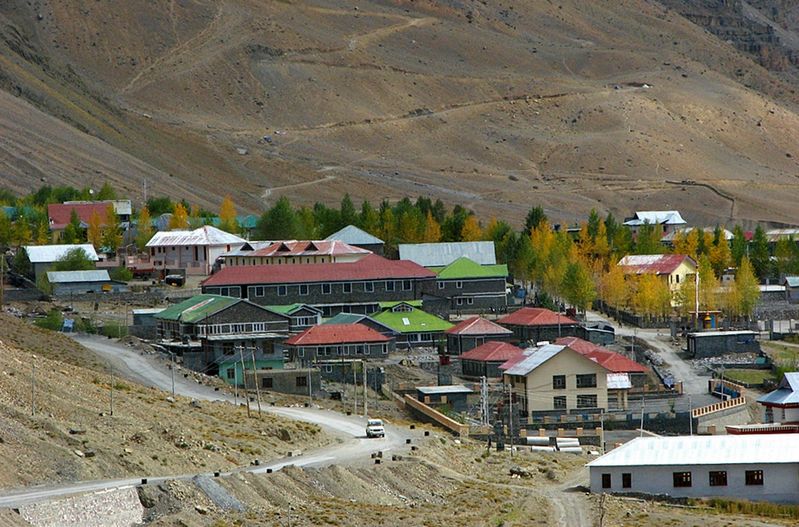
Kaza, Lahaul and Spiti Valley
The beautiful town of Kaza is located at an altitude of about 12,500 ft., on the left bank of the Spiti River in the majestic Lahaul and Spiti Valley of Himachal Pradesh. It is known as the sub-divisional headquarters of Spiti and the largest township in the Lahaul and Spiti Valley, which is one of the most beautiful valleys of Himachal Pradesh. Kaza is surrounded by high mountains, crystal clear river & streams, and barren landscapes interspersed with green landscapes and meadows. It is a marvelous destination, which houses several beautiful palaces, monasteries, gompas, and other historical buildings. Highlights Kaza is a popular tourist place in the Lahaul and Spiti Valley of Himachal Pradesh. It is divided into two areas-the old Kaza and the new Kaza, while the old kaza is called Kaza Khas and comprises king's palace, monasteries, gompas, and ancient buildings, the new Kaza is called Kaza Soma and houses government offices, hotels & restaurants. Tourists from all over the world visit this stunning destination to get a glimpse of the beautiful mountain terrains and pristine locals that also offer adventurous activities such as trekking, mountaineering, etc. There are three most popular trails from Kaza that conects to the lovely villages around here, plunged in a rich natural beauty of the Spiti Valley. Also, available here are some very ancient and exquisite monasteries and gompas that depict the culture and tradition of Kaza. One can easily reach this amazing spot from the Kinnaur Valley and Lahaul Valley. The route from Kinnaur Valley is most appropriate as it remains open throughout the year, while the Lahaul Valley route opens only during the summer as the Kunzum Pass closes during winter. Climate Kaza can be best visited in summer as the winter is quite severe with the temperature plunging to sub-zero levels. The locals remain within the confines of their houses and venture out only if it is absolutely necessary. They stock up the supply of their food that last them through the winters; the locals also utilize their time to produce handicrafts that can be sold during tourist season i.e. summer. There are many hotels and restaurants at Kaza, so one can stay comfortably and enjoy a holiday worth remembering. Kaza makes for an ideal base camp for all the treks and tours within the valley and provides guides, porters, and most importantly permits for treks.
Tabo, Spiti Valley
Tabo is a popular tourist destination located in the Spiti Valley of Himachal Pradesh. Perched at an elevation of around 3050 m above sea level, the town offers picturesque views to visitors. Situated in the Lahaul and Spiti District, Tabo lies on the banks of river Spiti and is surrounded by brown hills. Tourist Places In And Around Tabo The Tabo Monastery, believed to be built around one thousand years ago, is deemed as the largest royal complex in the Spiti Valley. It sprawls over an approximate area of 6300 sq m, which is environed by a mud brick boundary wall. Constructed in 996 AD, this monastery houses 9 temples and 23 chortens along with a monks’ chamber and a nuns' residence. The monastery is popularly known as the Tabo-Chos-Khor, which stands for the doctrinal circle. An architectural marvel, this monastery is famous for its magnificent sculptures, stucco images and wall paintings similar to those of the Ajanta and Ellora caves. It is because of this that Tabo has been given the title of Himalayan Ajanta. Positioned next to the Tholing Gompa of Tibet, Tabo has the oldest Buddhist monastery in India which is still operational. The paintings of the monastery can be traced back to the period between the 10th and the 11th century. On the other hand, the paintings of the main temple showcase the artistic style of the period between the 15th and the 20th century. As a convergent point of Tibetan and Indian cultures, Tabo became the birthplace of a new fusion art style known as the Indo-Tibetan style. Amongst the prominent temples of the ancient monastery in Tabo, the Temple of the Enlightened Gods, the Golden Temple and the Mystic Mandala Temple are worth mentioning. The Temple of the Enlightened Gods, also known as the Tug-Lha-khang, has an assembly hall, a sanctum and an entrance hall. A four-fold figure of the Vairocana, one of five spiritual sons of the Adi-Buddha, sits in the assembly hall. Originally constructed using pure gold, The Golden Temple was modified in the 16th century by Sengge Namgyal, an erstwhile king of Ladakh. The Mystic Mandala Temple, also known as the Initiation Temple, displays a huge painting of the Vairocana surrounded by eight Bodhisattvas or enlightened beings. The Bodhisattva Maitreya Temple is popular for a gigantic 20 ft tall statue of the Maitreya Buddha, also known as the Laughing Buddha or the Buddha of the Future. Carved doorways and picturesque mural paintings on the walls are the highlights of The Temple of Dromton, which is also known as the Brom-ston Lha-khang. The Larger Temple of Dromton, a later addition to the complex, is the second largest temple located in the Tabo Monastery complex with a floor spread over 70 sq m. The portico along with the niche of the temple adds another 42 sq m to the size. The Mahakala Vajra-bhairava Temple has been christened as the Temple of Horror. It is named so because it houses numerous idols of protective deities of the Gelukpa sect of Buddhism that are known for their ferocity. Apart from various temples, Tabo Monastery consists of numerous Tibetan paintings that are displayed for visitors in The Chamber of Picture Treasures, which is also known as the Z'al-ma.
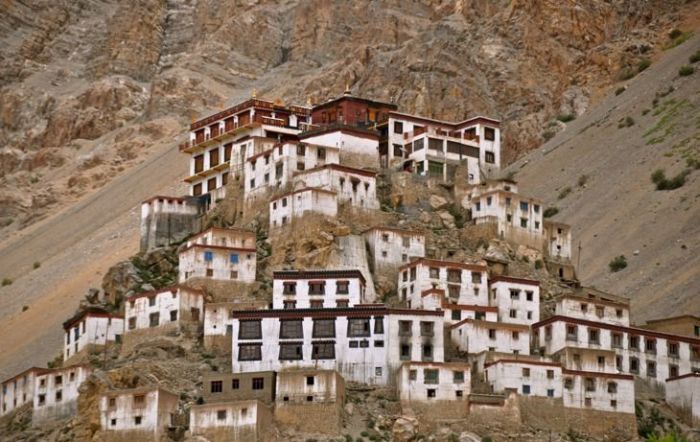
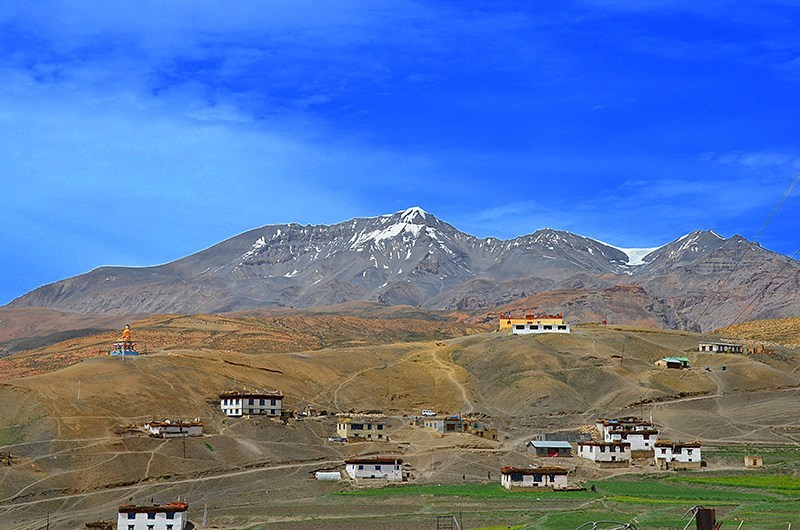
Komik, Lahaul & Spiti Valley
The picturesque Lahaul and Spiti Valley embraces several treasures in its vicinity and Komik is one such place, which is set beautifully amid the stunning mountains in the state of Himachal Pradesh in North India. Komik Village is the highest village in Asia and is located at a height of 18,000 feet above sea level. The beauty of this place cannot be described in words; it can only be felt and experienced with naked eyes. Surrounded by snowbound mountains and majestic valleys, Komik Village attracts countless tourists who simply want to get drenched in its breathtaking beauty and charming festivity. All you need to do is come and explore the delightful vistas of this scenic valley. Highlights Komik Village is famous for Lundup Tsemo Gompa Buddhist Monastery. It is believed that the monastery has 'Matrey Buddha,' or 'the future Buddha,' who looks after the well being of the people of Komik Village. It is also famous for being the highest motorable Buddhist monastery in the world, visited by bikers and travel enthusiast from all over the world. The 14th century monastery has a fortified castle made of slanted mud walls, representing the murals, scriptures, and arts belonging to the bygone era. It is said that even before the monastery was being made, it was already told in Tibet that a monastery in the shape of the eye of snow cock would be built in a mountainous region in Spiti. Thus, the place was called Komik or Koumik, where 'Ko' stands for snow cock and 'Mik' means eye. Other aspects of Komik For the people of Komik, their village is their world and it is indisputable because the beauty here is so evident that no one, not even an outsider would ever think of leaving this place. This cold deserted village hosts many festivals throughout the year and the same can be enjoyed by tourists who love to see Lamas performing Chham dance or mask dance. The adventure lovers have other perks of visiting this stunning village. They can trek throughout the region and enjoy the thrilling moments in the exquisite surroundings of Komik. This area is completely cut off from the rest of the country due to heavy snowfall during winter and the local residents store enough food to last the winter season as they avoid getting out of their houses at this time. They use the time in making handicrafts like carpet, shawls, cap, jackets, paintings, etc. There are basic options for homestay and hotels in Komick, where the food is served by local people with great lovel and that too when ordered in advance. Anyone looking for luxury stay can opt for Kaza. Komik can be best visited during summer from May to October as the routes from Rohtang Pass remain open at this time.
Kibber, Lahaul & Spiti Valley
The beautiful village of Kibber, which is located in Spiti Valley and at a height of 4205 meters above sea level, holds the distinction of being the highest Motorable village in the world,. This scenic village is situated in a cold desert, surrounded by picturesque mountains, barren landscape, and green meadows. The landscape of Kibber is similar to that of Ladakh and Tibet and the Tibetan Buddhism is the predominant religion here. This is the reason the Spiti Valley is also known as Little Tibet. The high altitude and stunning & pollution free atmosphere of Kibber is a boon for sky gazers and photographers, who get the most amazing pictures of the natural wonders here. Kibber Village can be easily reached from Kye Monastery as it is located just a few kilometers away from the village. Other nearby villages such as Komic, Hikkim, and Langshu looks similar and can be reached easily from Kibber. All the people from these villages shifts to warmer locations during winter as the temperature drops below freezing point at the time of snowfall. Agriculture is the main source of livelihood in Kibber and potato farming is common here. The people also have other occupations such as animal husbandry, jobs in government programs, government services, and other businesses & crafts that include weaving. The houses in Kibber are constructed in Tibetan style with stone and adobe bricks and are worth seeing. The landscape of this scenic village stands apart from the entire Spiti Valley as it has more fertile fields that produce sufficient amounts even for trading. Farming is the main source of livelihood for the people of Kibber and barley and Peas are the main crops harvested here. The village has all the basic amenities like electricity, school, post office, hospital, restaurants, and hotels and so, the tourists manages to stay here comfortably. Highlights Kibber Village houses many popular monasteries and temples that you can visit during your holiday at this heavenly place. People can also visit the Kibber Wildlife Sanctury, which is located close to the village and houses many snow-dwelling animals such as Ibex, Blue Sheep, Red Fox, Tibetan Woolly Hare, Himalayan Wolf, Lynx, Pika, Tibetan Wild Ass, and Snow Leopard. Kibber Village is a popular place among adventure lovers as trekking and mountaineering are the main attractions of the village. One can go to the Dandmachan Peak for trekking or mountaineering and also for photography. Kibber also arranges camping facilities during summer and there are some options for home stays, which are pretty much affordable. Options to eat are limited in this village; however, the guesthouses and home stays provide good homely food on demand. The locals serve Indian as well as Tibetan cuisines to the visitors.
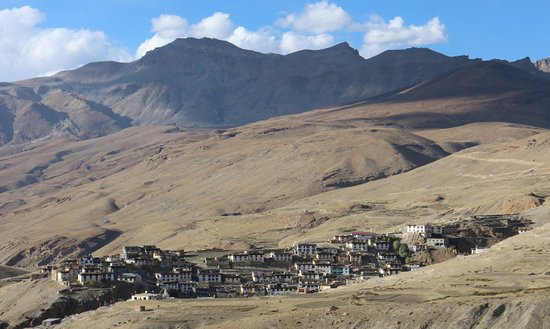
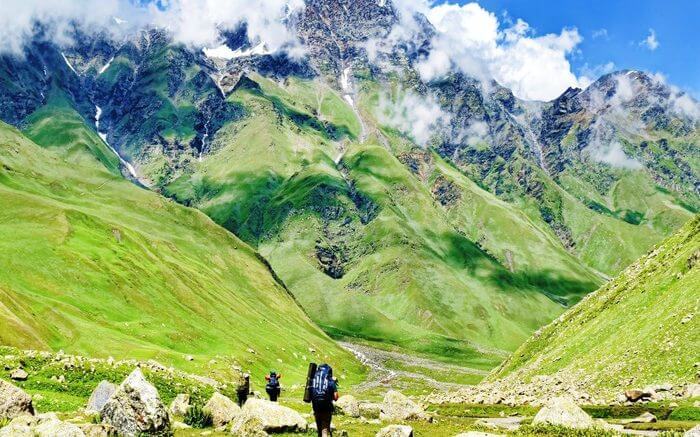
Pin Valley National Park
The glorious Pin Valley National Park is located in the cold desert area of Lahaul and Spiti in Himachal Predesh and is home to more than 20 species of animals and birds, including the endangered Snow Leopard. Set in the freezing landscpaes of Spiti Valley, this amazing park was established in 1987 as a part of the Great Himalayan National Park Conservation Area. Perched at an altitude that ranges between 3,300 and 6,632 meters above sea level, the Pin Valley National Park is a gem of an attraction, which is bestowed with an amazing assortment of flora and fauna. Fauna There are many animal species in the park, but it is the endangered Snow-Leopard that attracts tourists from all over the country, tourists who are keen to have a view of this exotic animal. The park comprises of about 12 big cats and wild animals like Siberian Ibex, Bharal, Weasel, Red Fox, Marten, Woolly Hare, Tibetan Gazzle, Himalayan Marmot, Blue Sheep, Himalayan Brown Bear, Himalayan Black Bear, etc. There are many bird species in the park, including the Himalayan Snow Cock, Chukor, Golden Eagle, Griffon, Cough, Raven, Blue Rock Pigeon, Snow Pigeon, and more. Flora The Pin Valley National Park is characterized by alpine pasture or dry alpine Scrub Forest that offers a good collection of flora, including Juniper & Birch trees, Salix spp. & Myricaria spp., Myricaria Shrubs, Bhojpatra (Betula Utilis), Bhutal (Juniperus mecropoda), Populus Spp, etc. Some of the plants found here are rich in medicinal quality and spices that are collected by local Pharmacists for the preparation of medicines. For those interested in plants and geology, can visit the park in the month of July and August. Accessibility The severe cold and extreme snowfall in winters may block your route and stop you from reaching this amazing park, so the best time to visit Pin Valley National Park is summer, from July to October. However, if you are adventurous and can trek even in the most freezing atmosphere, then Tapri to Kaza route keeps open in the winter and distance between Kaza and park area is 32 km + 10 km on foot. It is very difficult and dangerous to approach the Park during winter as the climate is severely cold, but November and early December are quite good seasons for animal sightseeing, because during these months the animals occupy the lower altitudes. Important Info The park's core zone stretches over 675 sq km and the buffer zone extends over 1150 sq km. No foreign tourist is allowed inside the park and the Indian tourists can enter with a permit of the park. The park is very popular with trekkers, who come to see its natural beauty and exquisite wildlife.
Chitkul, Sangla
Chitkul is said to be the last inhabited village within the Indian boundaries on the old Indo-Tibetan Road. Situated at the height of 3450 meters, the village is located at a distance of 28 km from Sangla, about 600 kilometres from Delhi in the Kinnaur Valley. It is like a doorway which opens into an exquisite landscape of breathtaking beauty and a serene environment. There are orchids, mountains, meadows, huge rocks, river, jungle, and grasslands in the village with the help of which it has made a unique identity for itself. A drive to the Chitkul village is pleasant. One can go for trekking in the forest as well and a wildlife sanctuary for all the wildlife as well as nature lovers out there. The journey to Chitkul is altogether different experience in itself. It is sparsely populated with as many as 600 locals who are warm, loving and extremely hospitable towards the tourists. While travelling to the valley, you will see River Baspa on your right and on the way you will also pass through the Rakcham village which is commonly known as the model village of the region. Numerous campsites are situated within the apple gardens by the side of the Baspa River. This little village is a must-visit place, and one should stay for at least a day here as the landscape keeps you magnetised all the time. It is a perfect place to spend some time off from the busy lives and the monotonous routines in the realm of natural beauty.
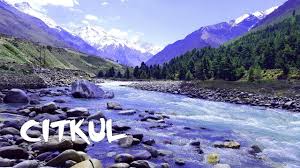
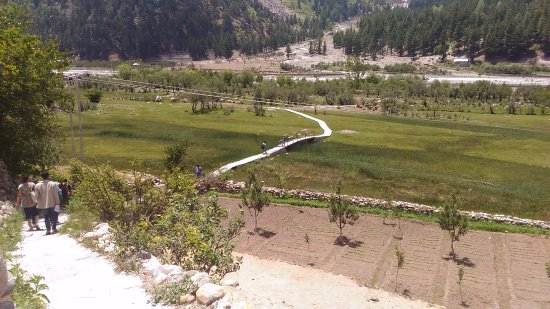
Sangla Village
Sangla serves as a base to hike to nearby villages like Kamru, Batseri, Rackham, and Chitkul. It offers an uninhibited rendezvous with nature — walks, treks and strolling in narrow alleys of Himalayan hamlets, lively bonfires by the river. If you’re an angling enthusiast, the swirling current of the Baspa is home to both the Rainbow and Brown Trout.
Baspa valley.
Bordering along western Himalaya with Tibet and Garhwal, the Baspa valley of Kinnaur has been open to visitors since the early nineties. The valley got its name from the Baspa river which originates from Chung Sakhago pass and meanders for around 30 km before meeting Satluj on its left bank near Karcham. Unlike the Spiti valley and Hangrang region of Kinnaur, the Baspa valley is green paradise in largely barren mountains. Baspa valley or Sangla valley is known for fruit-laden orchards, cedar covered slopes and flower crusted meadows. Bhojpatra tree is abundantly found in the Chitkul region. A land of blue skies, buzzing Baspa river, soaring peaks, deep valleys, apple orchards, and syncretic culture — Baspa valley a place for people who are seeking genuine peace and soul-calming solitude far, far from the madding crowd. The fort of Kamru is another landmark in Baspa valley. As Mahatama Gandhi once remarked that ‘the soul of India is in its villages’— some of the villages like Chitkul , Rackcham, Sangla, Kamru and Chansu are the soul of Baspa valley.
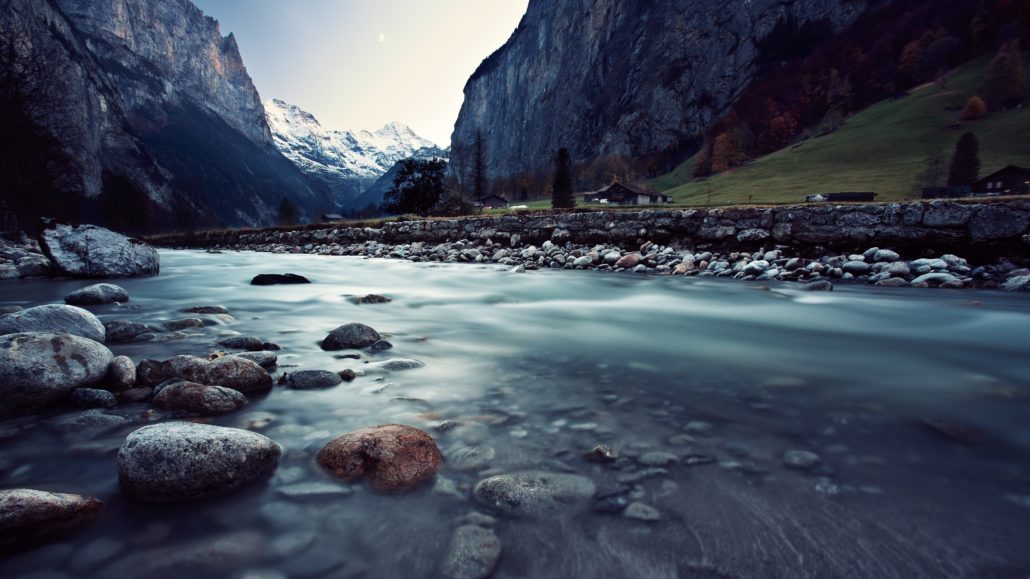
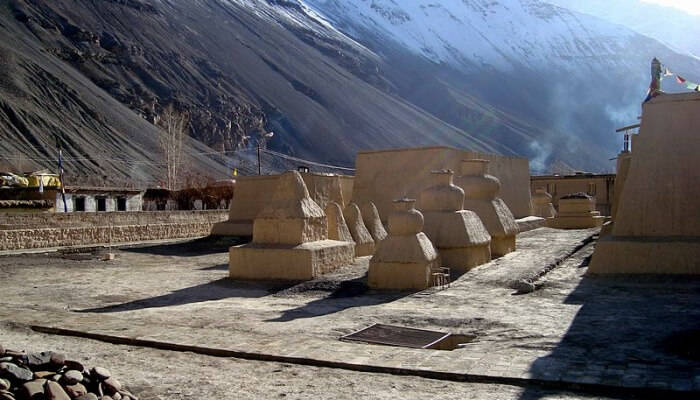
Tabo Monastery
The Tabo Monastery was founded by a Tibetan Buddhist named Ringchen Zangpo. The monastery is situated in the Tabo village of Spiti valley. The walls of this monastery are filled with Buddhist teachings and consist of a large number of scrolls, manuscripts and statues that depict the Buddhist religion. It is one of the oldest and active monasteries in Himachal Pradesh and India. Unlike other monasteries in the valley which are situated above the valley, the Tabo monastery is situated below the valley. Above the monastery are caves where monks can meditate. Many of these cave walls are inscribed by Buddhist teachings. Location: Spiti Valley, Himachal Pradesh, India
Nako
The unspoilt, serene and picturesque village of Nako is located in Kinnaur District of Himachal Pradesh at a height of around 3600m. Nako is found at the east end of Kinnaur Valley and can be called almost the last attraction on the way to Malling Nullah. Malling Nullah is located in between Kinnaur and Spiti Valley and one of the most happening travel destinations of Himachal Pradesh. Nako lies on the region close to Tibbetan Border and travellers thus need to possess inner line permit to travel to this region. Inner line permits are required for the foreign nationals for overnight stay in any part of the village Nako. As the village is very small in its area, one can easily explore the hidden gems of this village on foot. The major attraction of Nako Village is the Nako Lake which is located amidst extremely hilly terrains. Close to this lake one can get to see four Buddhist monasteries and a huge footlike impression.
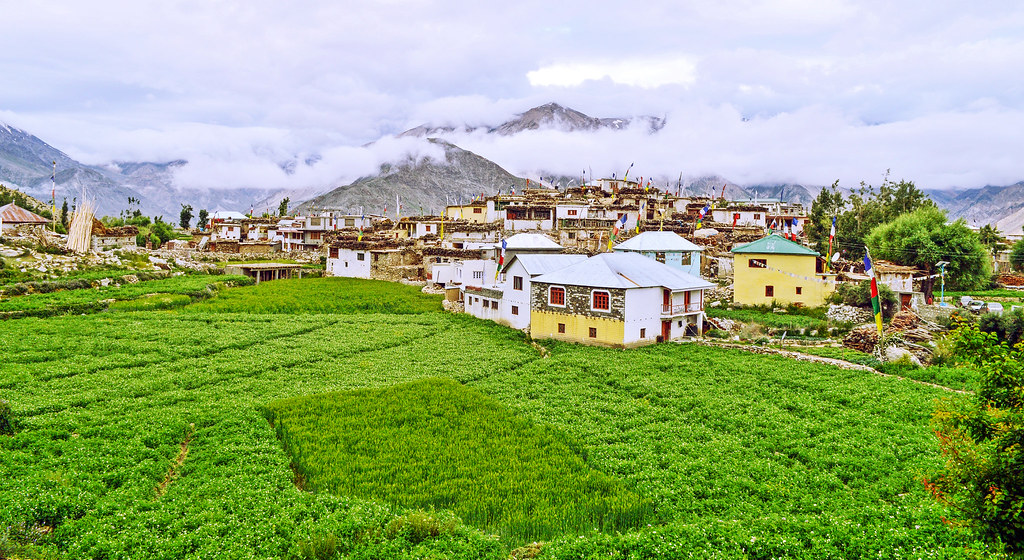
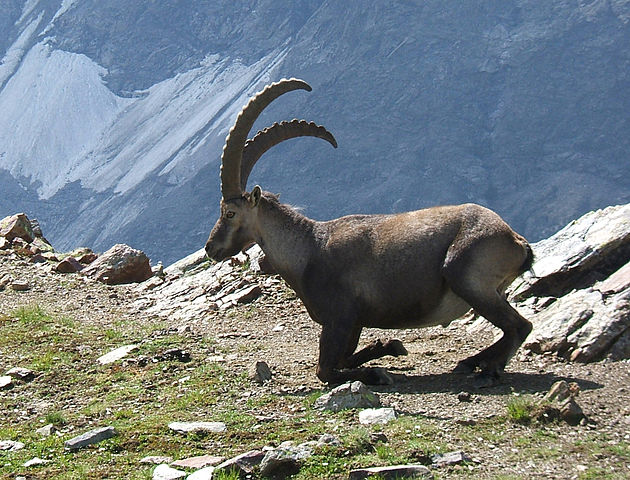
Lipa-Asrang Sanctuary
A must see tourist spot for the solitude lovers and avid worshipper of nature, Lipa Asrang Sanctuary is around at a height of 4,000 to 5,022 m. The sanctuary is spread over an area of around 30.89 sq km. The variety of flora found in this sanctuary includes dry coniferous forest, dry alpine scrub, dwarf juniper scrub, dry broad leaves, western Himalayan temperate forest, and coniferous forest. The most commonly found fauna in this sanctuary are Yak, Leopard, Ibex, Goral, Brown Bear, Blue Sheep, Himalayan black Beer, Musk Deer etc. Random tourists are not allowed to enter this sanctuary. So they need to take prior permission to explore the sanctuary.
Rakcham
A relatively unknown travel destination on the way to Chitkul via Sangla, Rakcham is found at a height of around 2900m. A sparse population of around 800 people inhabit the village. While moving towards Chitkul from Sangla, the village is found on the left side of the main road and the river Baspa flows on the right. The inhabitants of Rakcham are known as Kinnaurs and mostly nomadic. The men in Rakchum normally take care of the herd of sheep and cows whereas women tend to farming and household chores. During winter the village the village remains under thick snow coverings and people move to the lower regions. They move to the village again in April to sow the seeds. The village has two temples dedicated to Lord Shiva and Goddess Kali.
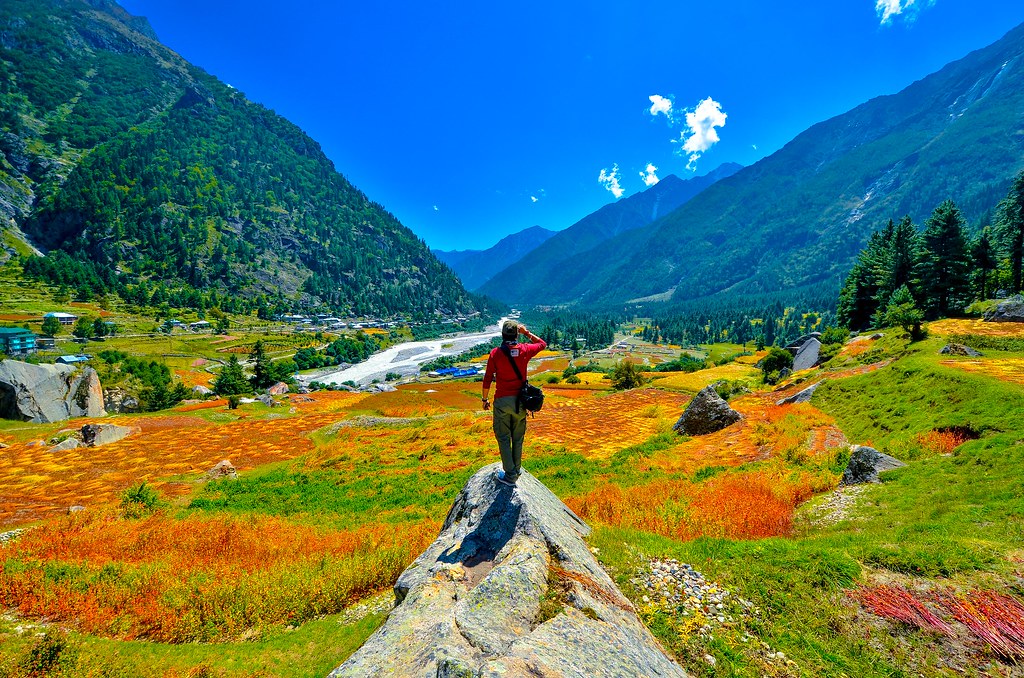
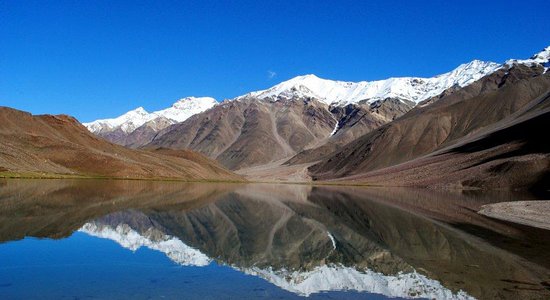
Suraj Tal Lake, Spiti Valley
Located at an elevation of 4950 m above the sea level, Suraj Tal Lake is considered as the 3rd largest lake in India. Situated in Spiti Valley, Suraj Tale In literal sense means, ‘The Lake of Sun God’. Just below the Baralacha pass, the stunning lake should definitely be visited while here, especially if they are into photography. The Suraj Tal, is one of the most dream-like and photogenic lakes. Due to the belief that a dip in the Suraj Tal lake cleanses a person of his sins, it attracts a lot of people and is therefore considered spiritual. However, the major reason that the lake has gained popularity is that it comes en-route to the famous Manali-Leh path that is popular for trekking and biking trips, that also encompasses the Baralacha-La Pass on the way. Suraj Tal is, thus, meant for people who are mostly adventurous, and religious at the same time.
Pin Valley National Park, Spiti Valley
Set amidst semi-frozen rivers in the Pin Valley, the Pin Valley National Park is situated in the Cold Desert Biosphere Reserve situated in the Lahaul and Spiti District of Himachal Pradesh. The elevation of the park ranges from about 3,500 metres near Ka Dogri to more than 6,000 metres at its pinnacle. One of the fascinating facilities of its kind, the Pin Valley National Park is home to the rare species of famous Himalayan snow leopards and their prey, the Ibex. The National Park is most famous for its incredible trek which is a delight for all its visitors. It snows for the most part of the year rendering the trek a thrilling and adventurous expedition. However, make sure you obtain the required permits. Also, foreign nations are not allowed inside the park. The Pin Valley park’s core zone is sprawled across a vast area of 675 sq km while its buffer zone is extended over almost 1150 sq km. Today it is home to almost more than 20 species of flora and fauna including the endangered snow leopard which is the most significant inhabitant of Pin Valley Park. There are also Siberian Ibex, Bharal, red fox, weasel and marten that call this place their home. Several species of birds also inhabit in the region such as pika, snow cock, bearded vulture, chukor, golden eagle, griffon, Himalayan chough and raven.
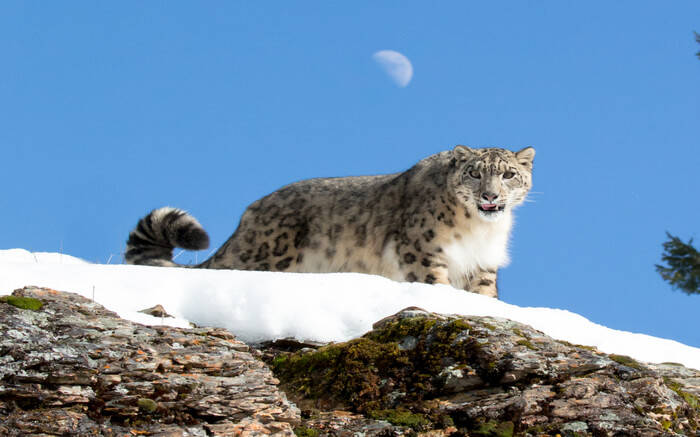
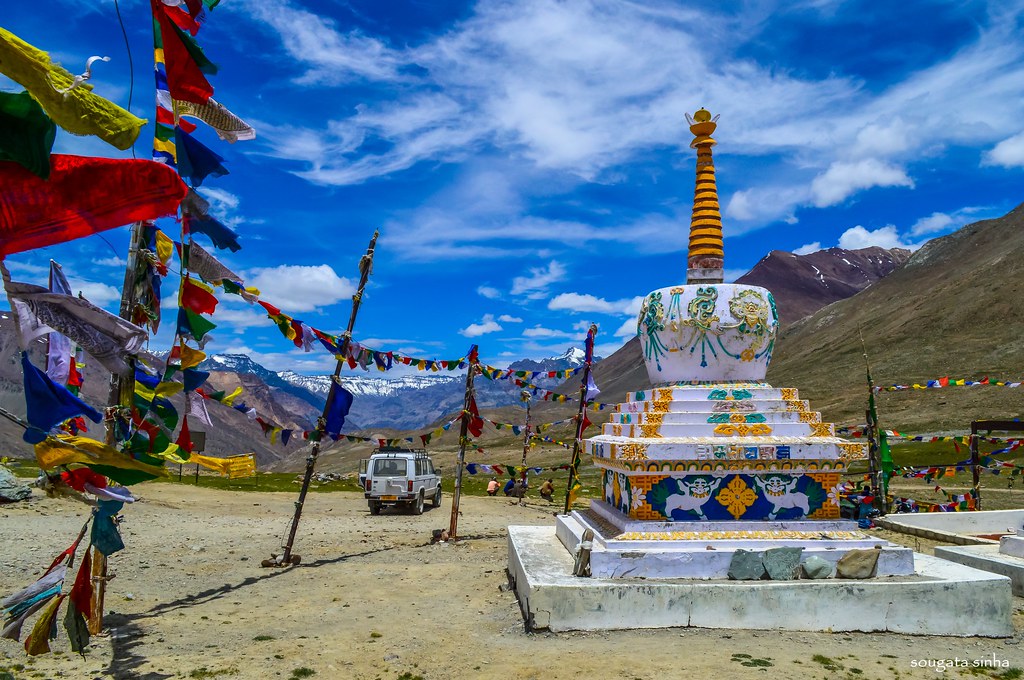
Kunzum Pass, Spiti Valley
Kunzum Pass or Kunzum La, as it is called by locals, is one of the highest motorable mountain passes of India, located at an altitude of 4,551m above mean sea level. It serves as a gateway to the beautiful Spiti valley Via Kullu and Lahaul. It lies on the eastern Kunzum Range of the Himalayas and is at a distance of 122 km from Manali. Kunzum La offers an incredible 360-degree view of Bara- Shigri Glacier (the second longest glacier in the world), a jaw-dropping vista of Chandrabhaga Range and a spectacular view of the Spiti valley. This enthralling view makes Kunzum Pass a photographer's dream. There is a 15km trek to the famous Chandratal Lake (moon lake) from Kunzum Pass. It is believed that the visitors have to stop at the temple of Goddess Kunzum Devi, on their way to the pass, to pay their respect and seek the blessing to travel safely through the rugged terrain safely. The tradition is to take a complete circle of the temple in your vehicle.
Key Monastery, Spiti Valley
The Key Monastery is a famous Tibetan Buddhist monastery in the Lahaul and Spiti District of India. Located at an altitude of 4,166 metres above the sea level, the monastery is very close to the Spiti River in the Spiti Valley of Himachal Pradesh in India. Also known as the Kye Monastery and Ki Monastery, it is believed to have been founded by Dromton, who was a student of the famous teacher Atisha in the 11th century. The stunning Key Monastery is over a thousand years old and is also the largest monastery to be found in the entire Spiti Valley. The magnificent monastery doubles up as a religious training centre for the Lamas, and about 300 lamas receive their education from here. It has a long and quite fascinating history that is attached to it: a long history that involves numerous attacks that the place had to face. Nevertheless, Kye Monastery survived and celebrated the completion of its thousand years in the year 2000 in the presence of Dalai Lama. Today, the Key Monastery is visited not only by locals but also by tourists from all parts of the country who come looking for it in order to seek quietude, silence and inner tranquillity.
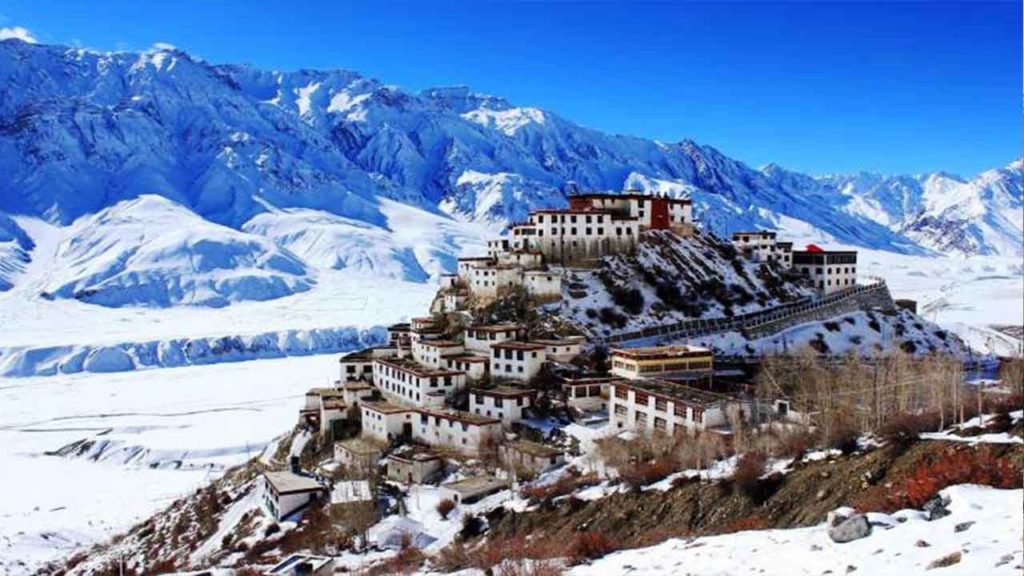
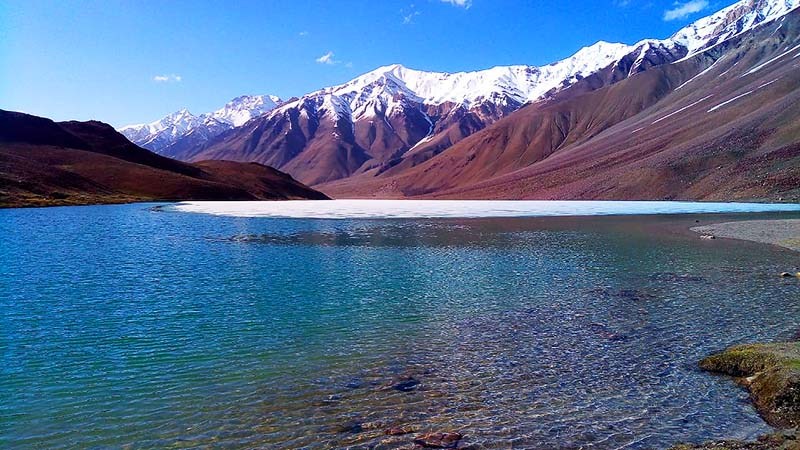
Chandratal Lake, Spiti Valley
A camper and trekker's paradise, Chandratal Lake is often referred to as one of the most beautiful lakes located at an altitude of about 4300 m in the mighty Himalayas. The stunning lake is situated on the Samudra Tapu plateau which overlooks the Chandra River. The name "Chandra Taal" (Lake of the Moon) comes from its crescent shape. This lake is also one of two high-altitude wetlands of India that have been designated as Ramsar sites. Once a tentative residence for Tibetan traders traveling to Spiti and the Kullu valley, it attracts thousands of adventure enthusiasts from all over the world. Legend has that the Chandratal Lake lies in the vicinity of a place from where God Indra's chariot picked up Yudhishthira, the eldest of Pandava brothers in Mahabharata. This fact renders the lake sacred and thus, is flocked by a lot of Hindu devotees. The colour of water of this holy lake keeps changing from reddish to orange to blue to emerald green as the day ends. Vast stretches of green meadows house the best camping sites and an array of different wildflowers during springtime. The trek from Batal to Chandratal can be quite a tedious trail, but the captivating views and charm of the place will be worth it. The sun's light reflecting on the surface of the astounding Chandratal Lake makes it seem crystal clear.
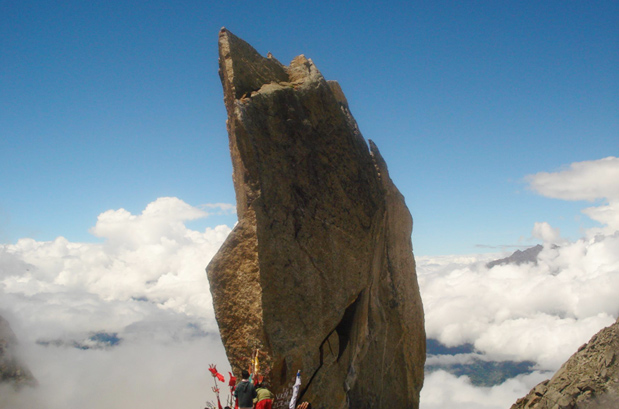
Kinner Kailash Parikrama ( Charang – La )
Mount Kinner Kailash is located in Kinnaur in Himachal Pradesh. The trail provides a panoramic view of the whole range of Kinner Kailash mountain peaks. This region is located on the Indo-Tibet border and gives a wonderful introduction to the confluence of Hinduism and Buddhism. The landscape of the area varies from the lush green scenic valley of Sangla Valley to the snow-clad mountains of the Kinner ranges. This trek is packed not only with some of the best views of the mountains but also provides an insight into the rich history of trade, religion, and diverse ethnic groups, the experience of which leaves one enchanted.
Borasu pass trek
Borasu Pass at a height of 5450 meters (17880 feet) above sea level is a high mountain pass connecting the Indian states of Uttarakhand and Himachal Pradesh and is located at the border of the two states. This trek goes through the famous Har-ki-Dun valley and we witness the beautiful glacial lakes of Morinda Taal and Zhupkia Glacier. The trail for this trek passes through a glacier, narrow ridges, vertical show slopes, meadows, and boulders. Overall a very adventurous experience not to mention the unforgettable views of the mountains.
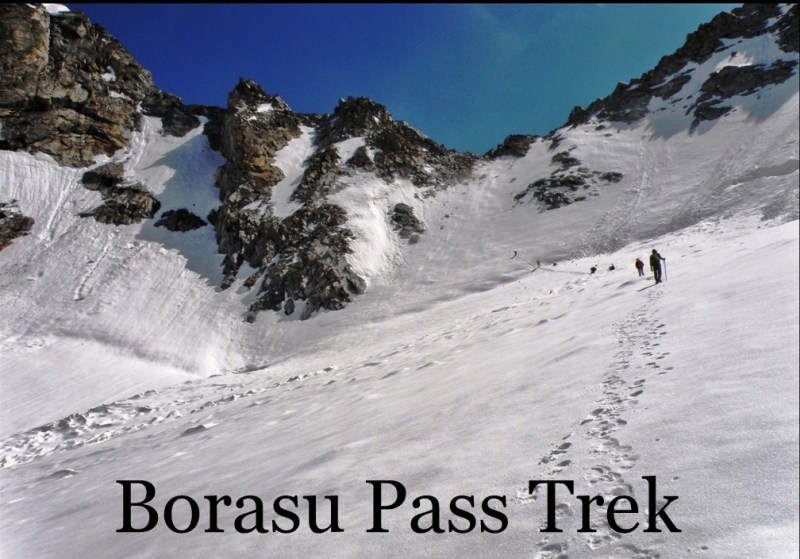
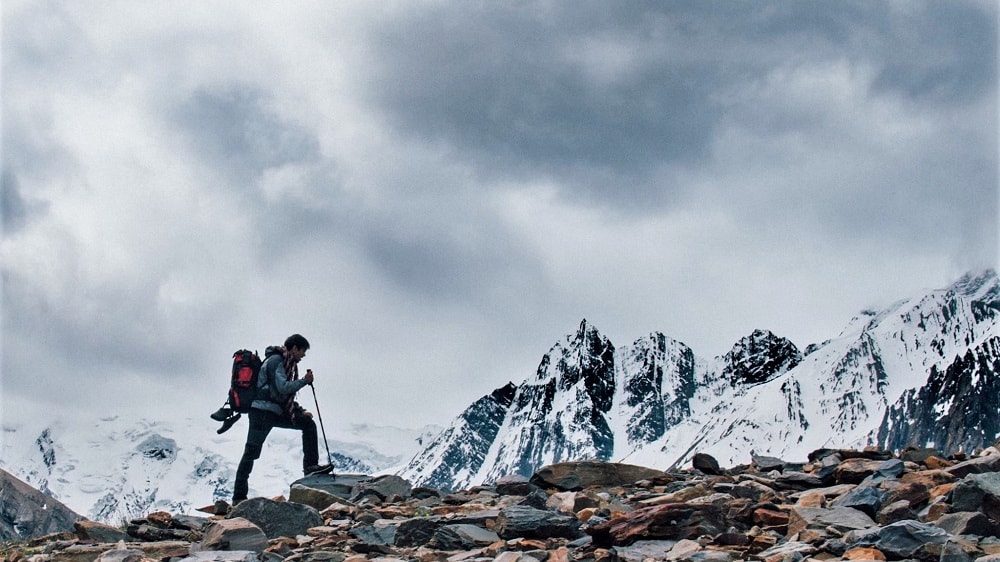
Lamkhaga pass trek.
It is a fairly remote trek and is now regarded as the classic route from Gangotri to Kinnaur, which was first crossed by Marco Pallis in 1933. The trek is also known as Chitkul to Gangotri trek or Harsil to Chitkul trek. It trek can be done from either side. The beautiful route takes you through some of the most remote areas of Uttarakhand and Himachal Pradesh, like the Jalandhari valley that is covered with flowers post monsoon. The snow in the early season could impede your progress. Harsil is famous for Wilson’s Cottage built in 1864. Gangotri is a short drive from Harsil, while Chitkul is the last village in the Baspa valley
Chandratal Camping
Formed in a crescent shape, and situated at 4,300 meters in the Himalayas, camping near the Chandratal Lake is an absolute must-do in Spiti Valley during August. The incredible views around are great to soak in, and witnessing the change in color of the lake is an experience of a lifetime. Entry fees: INR 1,500 and above per person depending on the camp retreat you choose Location: Middle Himalaya, Spiti Valley, Himachal Pradesh
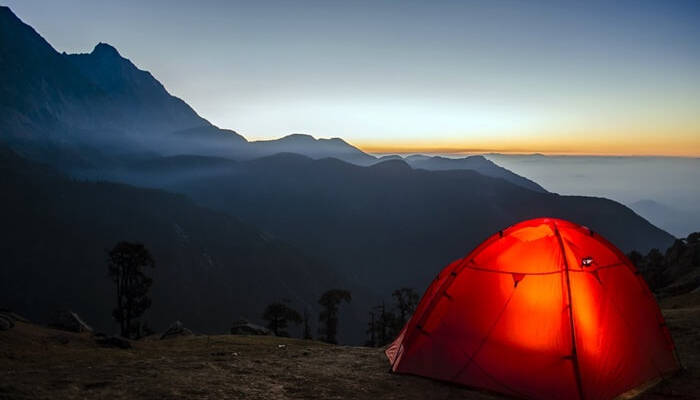
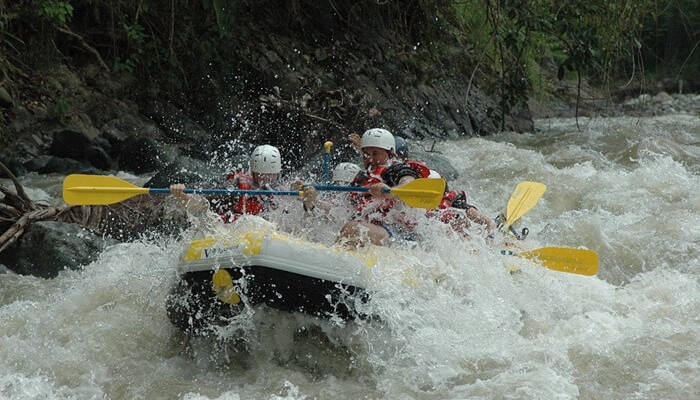
River Rafting
Of all the things to do in Spiti Valley in August, rafting is the most thrilling experience to have. Riding along the waves amidst the spectacular mountains, surreal hilltop monasteries, and breathtaking views around are nothing less than magical. Best place for river rafting: Spiti and Pin rivers Level of difficulty: Moderate Distance covered: It covers a distance of 180 km starting from Tuting to Pasighat
Suraj Tal
Suraj Tal is the highest lake in India making it a top attraction for visitors. Located close to Baralacha Pass, the lake gives one breathtaking views. For best vistas travelers usually visit this lake during the summer months. Location: Spiti Valley, Himachal Pradesh
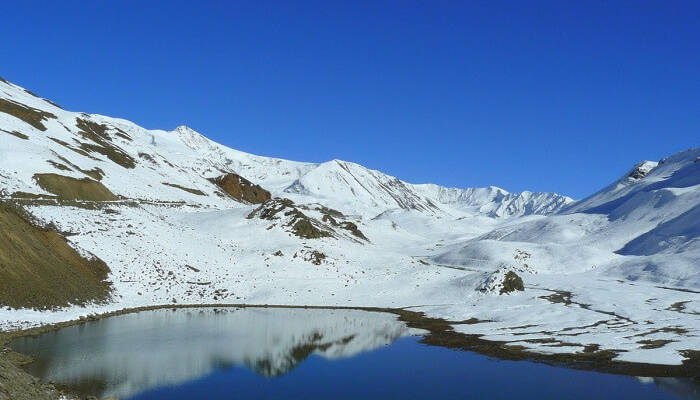
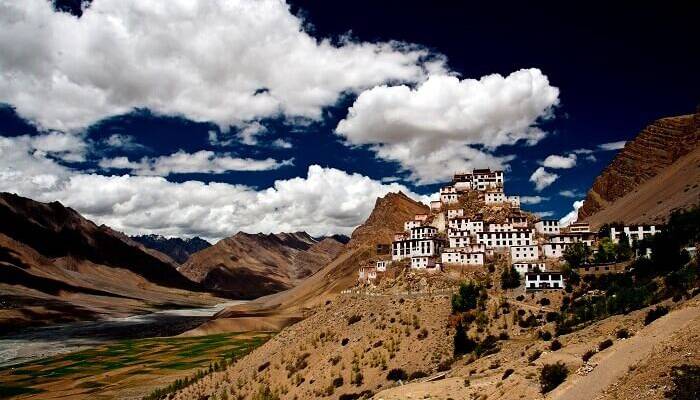
Buddhist Monasteries
Spiti is a religious abode for many, which is another reason that makes it such a popular tourist attraction. There are numerous monasteries that are set up along the valley are worth visiting during your trip for experiencing sheer bliss. Timings: Most of the monasteries open early in the morning for tourists & close by 5 or 6 in the evening. Famous monasteries in Spiti: Key Monastery, Kungri Monastery, Kardang Monastery, and more.
World’s Highest Post Office
Situated at 4,389 meters between Komik and Langza villages in Hikkim, the world’s highest post office is a place you must definitely include in your Spiti Valley tour itinerary and so do not miss traveling to Lahaul, Spiti in August. You can either drive to this place or trek uphill from Kaza to reach here. Entry fees: There is no entry fee for visiting this place. Location: Hikkim, Lahaul and Spiti, Himachal Pradesh
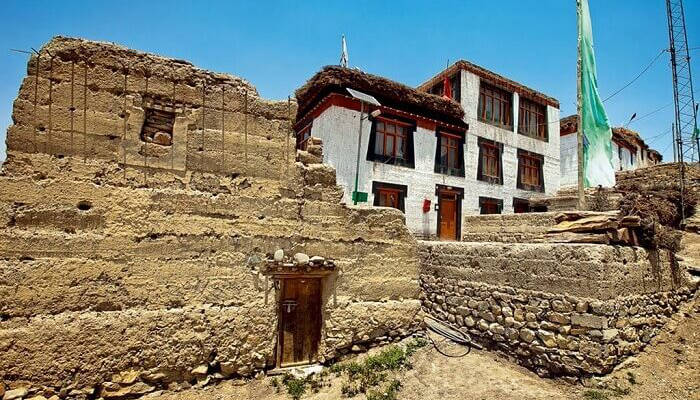
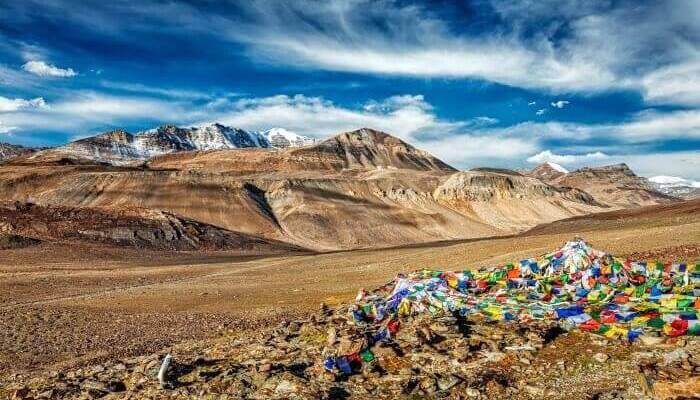
Baralacha Pass
Known as one of the dangerous passes in the world, visiting the Baralacha Pass is nothing less than an achievement, especially if you’re not brave at heart. You can reach here either via your bike or by trekking. The intersection of Pir Panjal, The Great Himalayan, and the Zanskar Ranges is definitely a sight you wouldn’t want to miss. Location: Manali-Leh Highway, Keylong, India
White-water rafting
Adrenaline junkies looking for more than a yak safari or trekking should go whitewater rafting. Snowy mountains, hilltop monasteries, whitewashed settlements and wonderful scenery around every bend, Spiti is a perfect place to enjoy this water sport. The Spiti and Pin Rivers offer whitewater rafting opportunities.
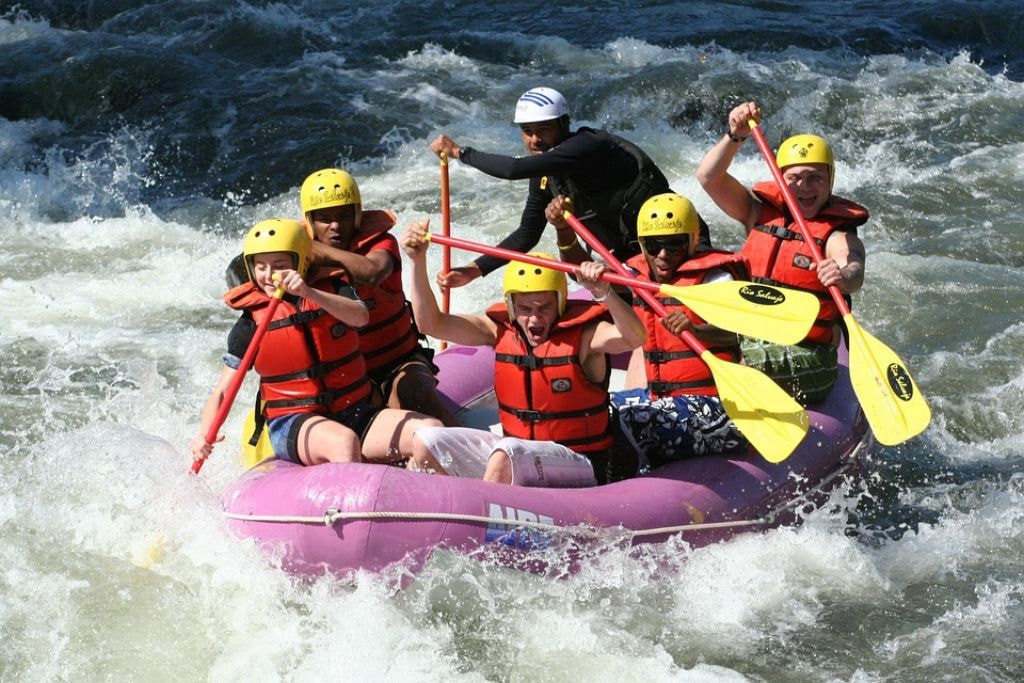
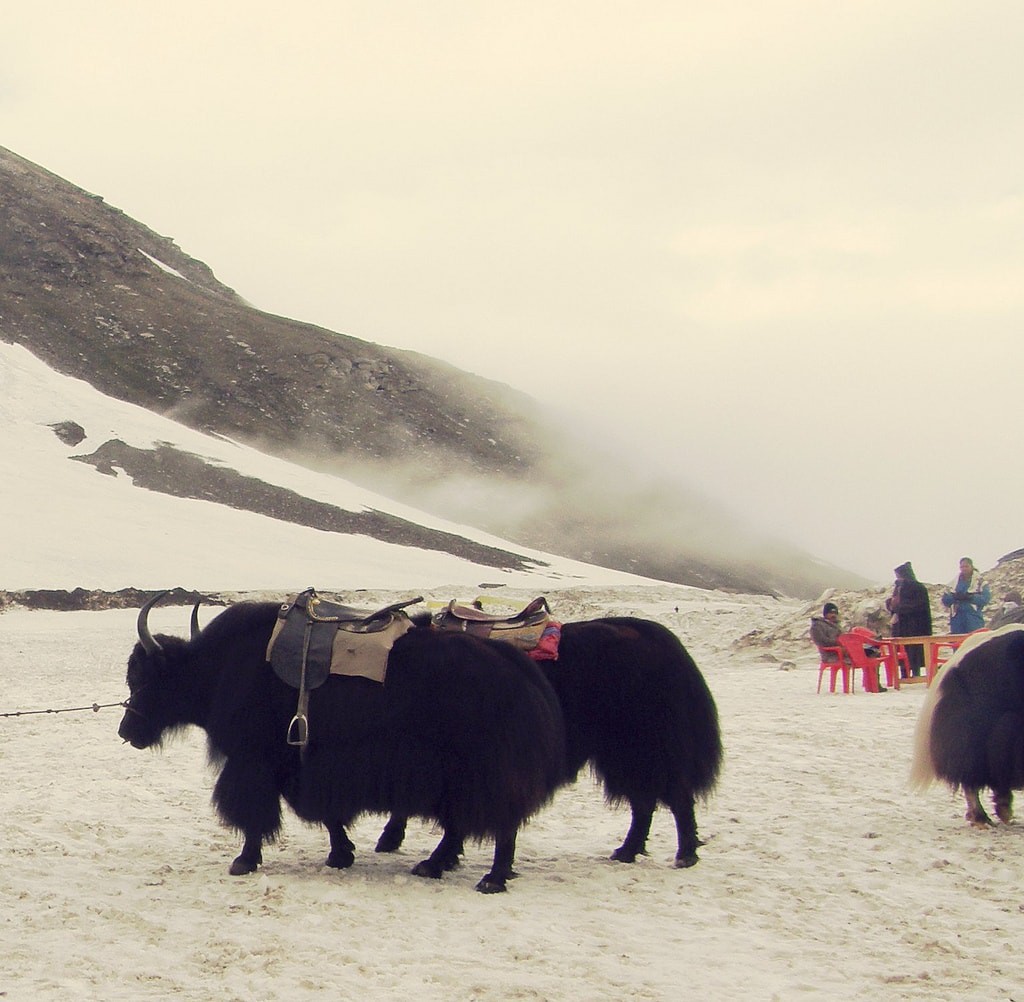
yak safari
To experience Spiti like a local, opt for a local ride; that is, a yak safari. Almost all village families have at least one yak. If you aren’t up for trekking, this is a perfect alternative.
Kaza
Perched at 3,200 meters (10,499 ft), the village of Giu is home to a 500-year old mummy kept in a glass chamber. It’s a naturally preserved ,with hair and teeth intact. According to local folklore, the mummy is of a meditating lama, whose body was buried under a glacier during an avalanche, remaining there for more than 500 years until it was found by Indo-Tibetan police force personnel. Some consider it a living god and believe it has been looking after the hamlet for centuries. There are many explanations for its existence, but whatever the truth, it is worth visiting.
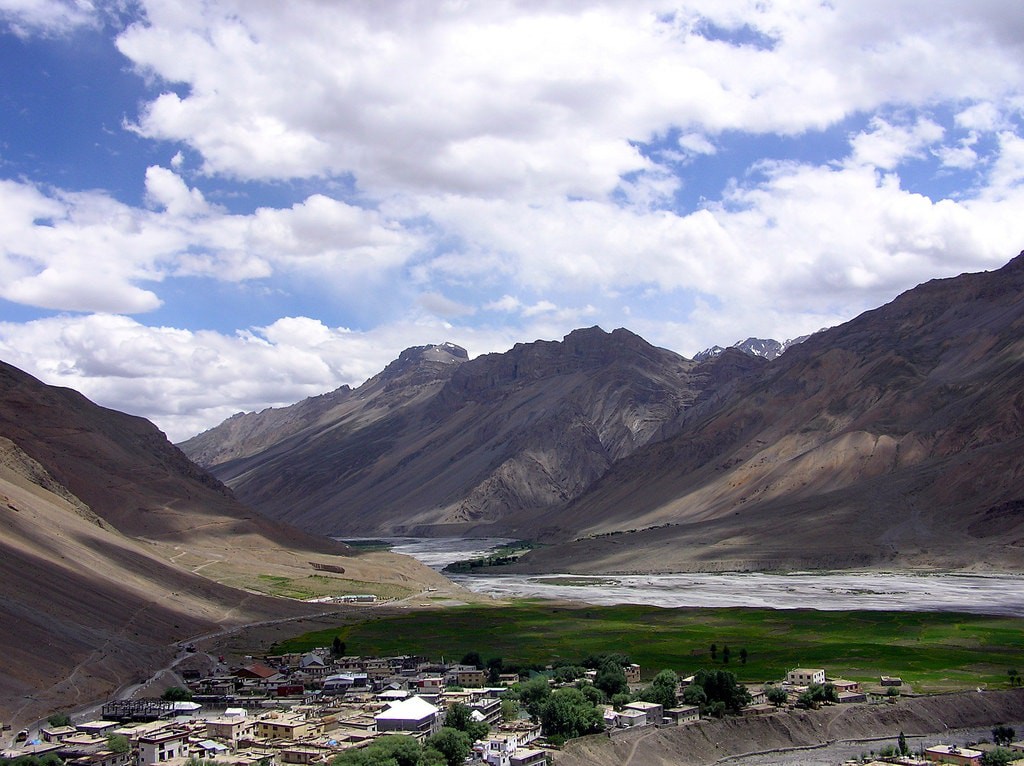
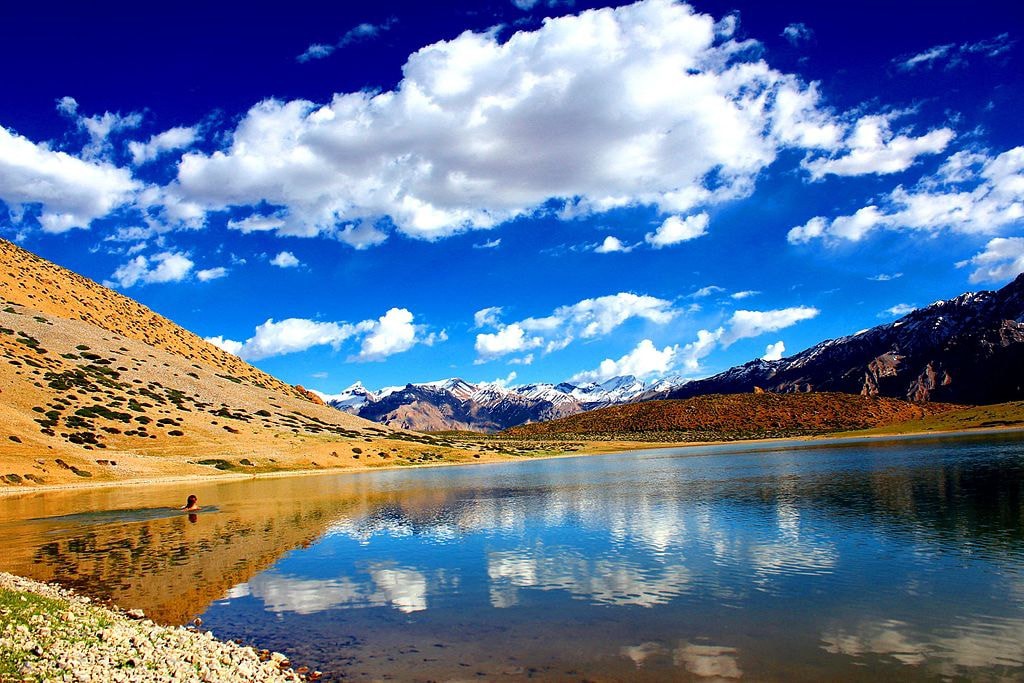
Dhankar Lake.
Joining a trekking expedition for as little as two days or as long as ten will allow you to camp out or sleep in tiny hamlets along the way. The Spiti Valley offers all kinds of trekking trails and of varying grades of difficulty. Some of the popular ones are: Village to village treks are also possible, like Kaza to Langza, Komic to Lalung via Demul, Lalung to Kaza via Dhankar and Tabo
Bike and trek in nature
Be one with nature at the emerald-green Suraj Taal, meaning ‘Lake of the Sun God’. Fed with the Bara-lacha-la Glacier, it is the third highest lake in the country, at an altitude of 4,883 meters (16,020 ft). The area around the lake is perfect for mountain biking and trekking. It also happens to be a pit-stop for trekkers and mountain bikers on the famous Manali-Leh trail.
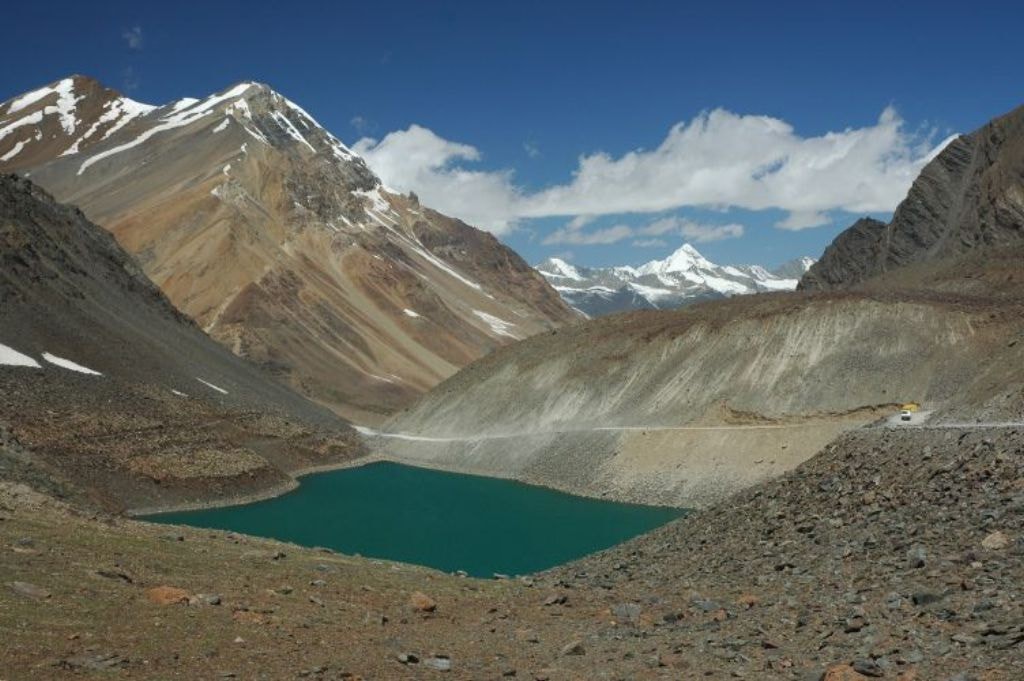
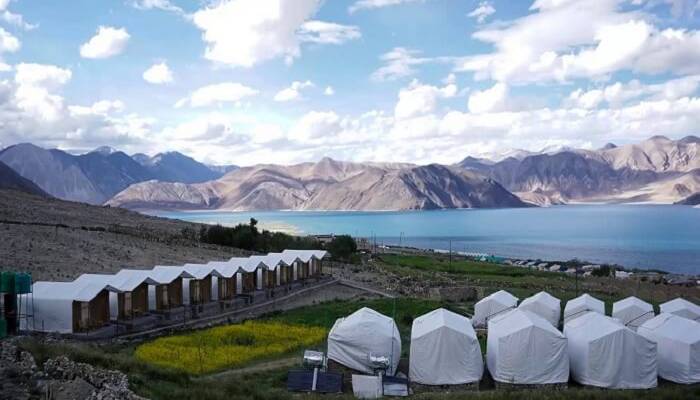
Camp at Chandra Taal Lake
Because of its crescent shape, this lake is known as Chandra Taal, meaning ‘Lake of the Moon’. It is situated at 4,300 meters (14,107 ft) in the lap of the Himalayas, and is characterized by vast swathes of green meadows and a backdrop of snow-covered mountains, which makes it perfect for camping with an incredible view. A major highlight of this lake is that it changes its colour throughout the day, turning an emerald green as the day ends. Tip: Visit from May to September, as the rest of the year it remains frozen. Chandra Taal Lake, Middle Himalaya, Spiti Valley, Himachal Pradesh.
Buddhist monasteries
Spiti is a religious and cultural center for Buddhists, and many Buddhist monasteries are scattered throughout the valley. The biggest Tibetan monastery is the fort-like Key (Ki) Monastery, set at an elevation of 4,166 meters (13,668 ft) and overlooking the Spiti River. Otherwise known as Key Gompa, this monastery was built in the Pasada style of architecture. The interiors are adorned with unique and rare Thangkas, ancient murals and weapons, along with the images of Gautam Buddha. The scenic backdrop provided by the snow-laden peaks and glaciers add to its charm. Try visiting this monastery in late July, during the annual three-day Chaam festival, where masked dances, spinning prayer wheels and ancient rituals will transport you into the spiritual trance. Tip: Trek your way to the monastery or rent a car/hitch-hike. There are no eateries there, so pack some food to take. The best time to visit is May to October.
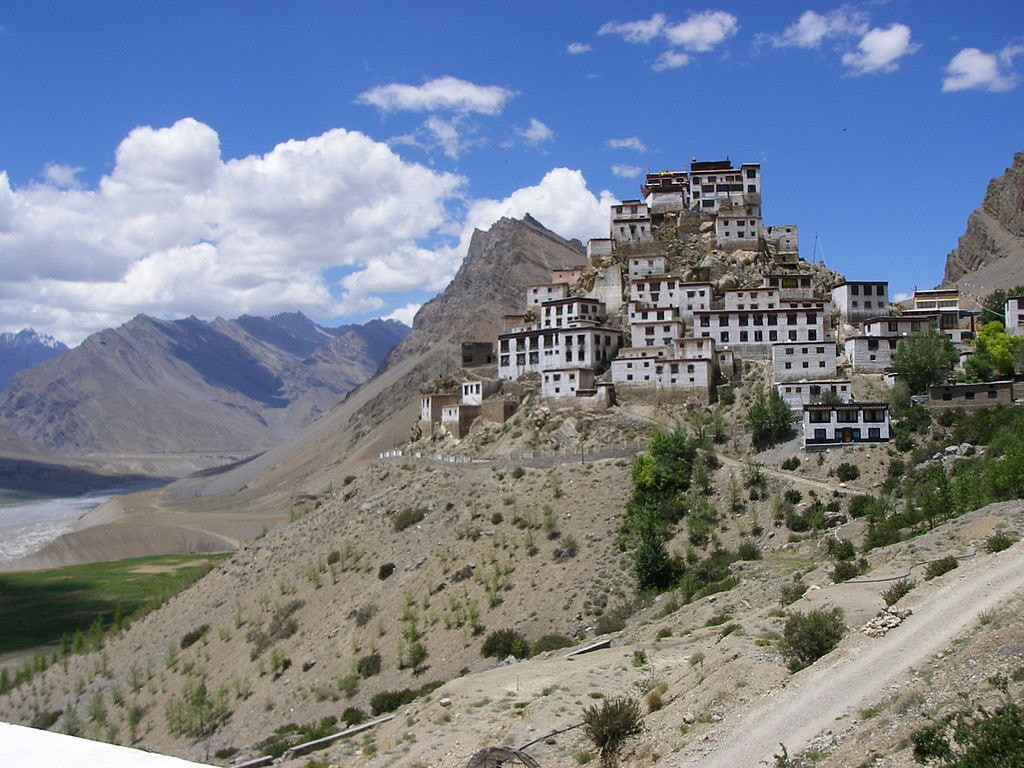
Car
Lahaul and Spiti are separated from Kullu by the Rohtang pass and Kunzum pass and it lies on the Manali-Leh highway. This route is fine to reach Spiti valley during the summers but is inaccessible for most parts of the year due to heavy snowfall. However, Spiti valley is accessible throughout the year though from Shimla via Kinnaur (except for occasional disturbances due to landslides or heavy snowfall).
Bus
The Himachal state transport runs buses through both routes in summers, however just a bus through the Shimla-Kinnaur-Kaza route. Direct buses are available from Chandigarh, Shimla, Kullu, Manali and some other parts of North India.
Train
The nearest broad gauge railway station from Spiti which have good connectivity is in Chandigarh. Jogindernagar also has a railway station which is nearest to Spiti, but it has very poor connectivity.
Flight
There is no direct flight connectivity to Spiti Valley. The nearest airport is in Bhuntar, near Kullu, 245 km away from the same. However, Bhuntar airport is small with limited operations. Chandigarh Airport, located at a distance of 522 km is the nearest international airport.
Monal Residency Kalpa
The company “Upvan Group of Hotels” a firm name of luxurious Hotels and comfortable stay at Himachal. Recently “Upvan Group of Hotels” has started is the journey from “Café The WoodWine” & “Hotel Monal Residency Kalpa” in 2019. Compa
 |
|  |
|  |
|  |
| 
Hotel Old Monk Kaza
Hotel Old Monk is a 3-star property situated in Kaza. This hotel offers a 24-hour front desk and room service.Overlooking Kaza Nullah just above the footbridge, the 10 rooms are plain but unusually large, with modern bathrooms, and there is ample co
 |
|  |
|  |
|  |
| 
Himalayan Destination Kalpa
"Hotel Destination" nestled in the foothills of Kinner Kailash range, is one of the picturesque and luxury accommodation hotel in Kalpa that speak all about serenity, privacy, safety, luxury and the scenic view of valley, apple orchards, snow-capped
 |
|  |
|  |
|  |
| 
Hotel Shidharth and Restaurant
If anyone wants to experience the eminence peace of Buddhism, they should come to Tabo. It is highly popular for the Buddhist monasteries and its geographical advantages are truly incredible. This small town is located in Lahaul and Spiti District an
 |
|  |
|  |
|  |
| 
Copyright © 2023. All Rights Reserved | IT Partner The Hotel Organization

